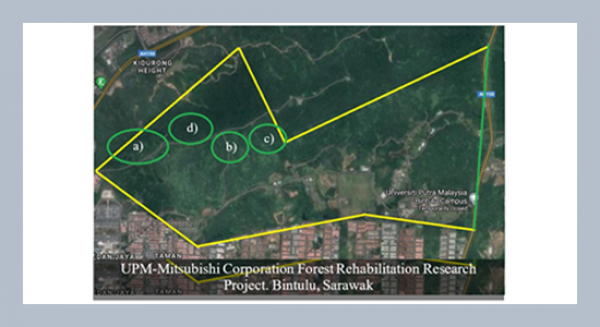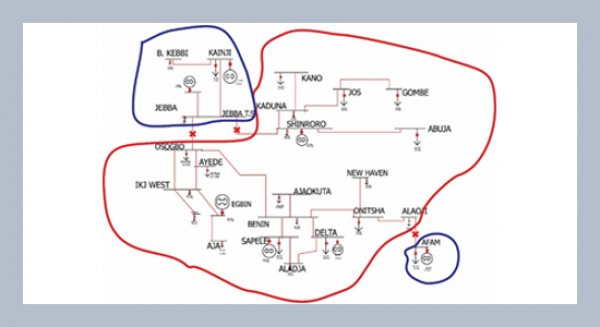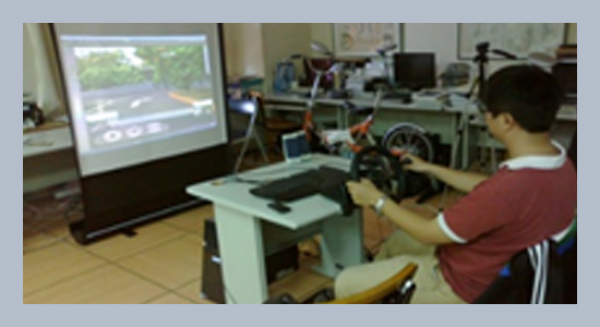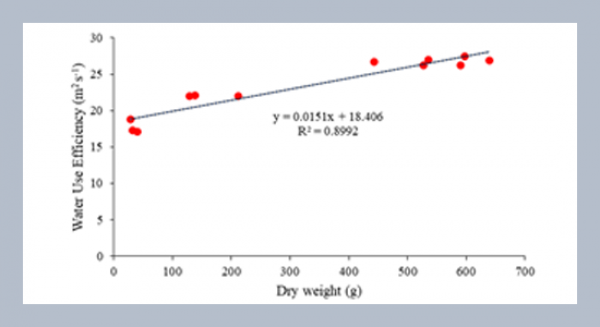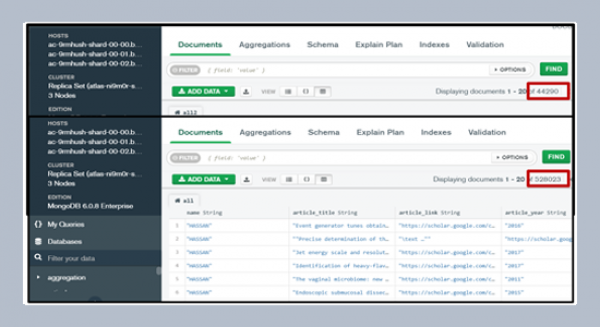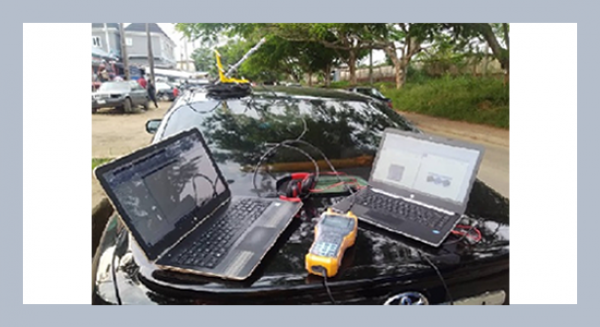REFERENCES
- Angelopoulou, T., Balafoutis, A., Zalidis, G., Bochtis, D. 2020. From laboratory to proximal sensing spectroscopy for soil organic carbon estimation – A review. Sustainability, 12, 443.
- Aydın, Y., Işıkdağ, Ü., Bekdaş, G., Nigdeli, S.M., Geem, Z.W. 2023. Use of machine learning techniques in soil classification. Sustainability, 15, 2374.
- Baker, H., Gabr, A., Djeddi, M. 2015. Geophysical and geotechnical techniques: complementary tools in studying subsurface features. International Conference on Engineering Geophysics, 15–18.
- Chala, A.T., Ray, R.P. 2023. Assessing the performance of machine learning algorithms for soil classification using cone penetration test data. Applied Sciences, 13, 5758.
- Chala, A.T., Ray, R.P. 2023. Machine learning techniques for soil characterization using cone penetration test data. Applied Sciences, 13, 8286.
- Daniyal, M., Sohail, G.M. Rashid, H.M.A. 2023. GIS-based mapping of geotechnical and geophysical properties of Lahore soils. Environmental Earth Science, 82, 540.
- Duffy, K., Siderius, K., Long, M. 2020. Parameterisation of the Koppejan settlement prediction model using cone penetration testing and gradient boosting. Proceedings of the International Association of Hydrological Sciences, 382, 443–447.
- Dungca, J., Galupino, J. 2023. Developing nomographs for the unit weight of soils. Buildings, 13, 2315.
- Egwuonwu, G.N., Okwonna, I.A., Okpala, P.K. 2022. Geoelectrical and geotechnical investigations for development of superstructures at Nkpologwu proposed judiciary site, Anambra Basin, Southeastern Nigeria. Physical Science International Journal, 26, 47–58.
- Fitzgerald, D.M., Ritchie, A.I.M. 2019. Geophysical methods for subsurface characterization: A review. Geophysical Journal International, 218, 1543–1561.
- Fletcher, R. 2023. Machine learning mapping of soil apparent electrical conductivity on a research farm in Mississippi. Agricultural Sciences, 14, 915–924.
- Fortier, R.M., Wu, W. 2012. Penetration rate-controlled electrical resistivity and temperature piezocone penetration tests in warm ice-rich permafrost in Northern Quebec, Canada. In Proceedings of the 2012 ASCE Geo-Engineering Conference, 1–10.
- Gao, W. 2024. The application of machine learning in geotechnical engineering. Applied Sciences, 14, 4712.
- Goebel, M., Knight, R. 2021. Recharge site assessment through the integration of surface geophysics and cone penetrometer testing. Vadose Zone Journal, 20, 1–18.
- Hengl, T., Heuvelink, G.B.M., Kempen, B., Leenaars, J.G.B., Walsh, M.G., Shepherd, K.D., Sila, A., MacMillan, R.A., Jesus, J.M.D., Tamene, L., Tondoh, J.E. 2015. Mapping soil properties of Africa at 250 m resolution: Random Forests significantly improve current predictions. PLoS ONE, 10, e0125814.
- Huang, L., Liu, Y., Huang, W., Dong, Y., Ma, H., Wu, K., Guo, A. 2022. Combining Random Forest and XGBoost methods in detecting early and mid-term winter wheat stripe rust using canopy level hyperspectral measurements. Agriculture, 12, 74.
- Ibitoye, F.P. 2023. Geophysical investigations for design parameters related to geotechnical engineering. Avantgarde reliability implications in civil engineering. IntechOpen, 1–17.
- Irawan, L., Pradana, I., Panoto, D., Darmansyah, A. 2022. Identification of subsurface materials in landslide-susceptible areas in the Pacet-Trawas road corridor using the geoelectrical resistivity method. 3rd International Conference on Geography and Education (ICGE). KNE Social Sciences, 219–230
- Ji, X., Lu, X., Guo, C., Pei, W., Xu, H. 2022. Predictions of geological interface using relevant vector machine with borehole data. Sustainability, 14, 10122.
- Jung, B.C., Gardoni, P., Biscontin, A., 2008. Probabilistic soil identification based on cone penetration tests. Géotechnique, 58, 591–603.
- Kamarudin, F., Budiman, F., Winarno, S., Kurniawan, D. 2023. Optimizing classification algorithms using soft voting: a case study on soil fertility dataset. Journal Teknologi Informasi Dan Pendidikan, 16, 255–268.
- Liu, H., Chen, Y., Zhao, L., Liu, W. 2023. Research on geotechnical data interpolation and prediction techniques. In 2023, the 4th International Conference on Management Science and Engineering Management (ICMSEM 2023). Atlantis Press, 1788–1795.
- Mayne, P.W. 2007. Cone penetration testing: A review of the state of the art. Geotechnical Testing Journal, 30, 1–16.
- Meng, F.Z., Li, S.J., Zhang, Z.H. 2012. Determination of mechanical parameters of reservoir landslide based on back analysis using evolutionary artificial network. Applied Mechanics and Materials, 170, 729–734.
- Nikooee, E., Mirghafari, R., Habibagahi, G., Khorassani, A.G., Nouri, A.M. 2020. Determination of soil-water retention curve: an artificial intelligence-based approach. E3s Web of Conferences, 195, 02010.
- Nurhasanah, Muhiddin, A.B., Djamaluddin, A.R., Niswar, M. 2024. determining the depth of hard soil layers using geoelectric resistivity and cone penetration test methods (case study: Kelurahan Bontoramba Kecamatan Somba opu kabupaten gowa). Journal Ilmu Pendidikan Fisika, 9, 142–151.
- Oberhollenzer, S., Premstaller, M., Marte, R., Tschuchnigg, F., GeorgH. Erharter, G., Marcher, T. 2021. Cone penetration test dataset Premstaller Geotechnik. Data in Brief, 34, 106618.
- Oyeyemi, K.D., Olofinnade, O.M., Aizebeokhai, A.P., Sanuade, O.A., Oladunjoye, M.A., Ede, A.N., Adagunodo, T.A., Ayara, W.A. 2020. Geoengineering site characterization for foundation integrity assessment. Cogent Engineering, 7, 1711684.
- Radočaj, D., Jurišić, M., Tadić, V. 2023. The effect of bioclimatic covariates on ensemble machine learning prediction of total soil carbon in the Pannonian Biogeoregion. Agronomy, 13, 2516.
- Rauter, S., Tschuchnigg, F. 2021. CPT data interpretation employing different machine learning techniques. Geosciences, 11, 265.
- Reale, C., Gavin, K., Librić, L., Kaćunić, D.J. 2018. Automatic classification of fine-grained soils using CPT measurements and artificial neural networks. Advanced Engineering Informatics, 36, 207–215.
- Robertson, P.K. 2009. Interpretation of cone penetration test–a unified approach. Canadian Geotech, Journal the NRC Research Press, 46, 1337–1355.
- Robertson, P.K. 2016. Cone penetration testing in geotechnical engineering. Geotechnical Engineering Handbook. Koerner, 2nd ed. New York: McGraw-Hill.
- Robertson, P.K. 2010. Interpretation of cone penetration test data. Geotechnical Engineering Handbook, 2nd ed. New York: McGraw-Hill.
- Shao, W., Yue, W., Zhang, Y., Zhou, T., Zhang, Y., Dang, Y., Wang, H., Feng, X., Chao, Z. 2023. The application of machine learning techniques in geotechnical engineering: A review and comparison. Mathematics, 11, 3976.
- Song, Q.H., Li, X. L., Li, Y.Y., Wu, Y. 2013. The practical probability analysis methods for stability of landslide. Applied Mechanics and Materials, 423, 1308–1311.
- Standar Nasional Indonesia. 2008. Cara uji penetrasi lapangan dengan alat sondir. Badan Standardisasi Nasional, SNI 2827.
- Sukamto, R., Supriatna, S. 1982. Peta Geologi Bersistem Lembar Ujungpandang. Benteng, dan Sinjai Sulawesi, Pusat Penelitian Dan Pengembangan Geologi, Bandung.
- Taher, K.I., Abdulazeez, A.M., Zebari, D.A. 2021. Data mining classification algorithms for analyzing soil data. Asian Journal of Research in Computer Science, 8, 17–28.
- Tumay, M.T., Farsakh, M.A., Zhang, Z. 2008. From theory to implementation of a CPT-Based probabilistic and fuzzy soil classification. From Research to Practice in Geotechnical Engineering, 259–276.
- Ural, N. 2018. The Importance of Clay in Geotechnical Engineering. InTech.
- Wang, Y., Huang, K., Cao, Z. 2013. Probabilistic identification of underground soil stratification using cone penetration tests. Canadian Geotechnical Journal, 50, 766–776.
- Weng, K., Jia, M. 2024. Predicting base resistance of super-long piles using a random forest model: a case study from ho chi minh city. IOP Conference Series: Earth and Environmental Science, 1337, 012035.
- Xu, J., Wang, Y., Zhang, L. 2022. Fusion of geotechnical and geophysical data for 2d subsurface site characterization using multi-source Bayesian compressive sampling. Canadian Geotechnical Journal. 59, 1756–1773.
- Yang, H., Liu, Z., Yan, Y., Li, Y., Tao, G. 2023. Adaptive fusion sampling strategy combining geotechnical and geophysical data for evaluating two-dimensional soil liquefaction potential and reconsolidation settlement. Applied Sciences, 13, 5931.
- Yang, Y., Song, X., Zhang, S., Hu, J., Ruan, M., Zeng, D., Luo, H., Wang, J., Wang, Z. 2024. Correlation analysis and prediction of the physical and mechanical properties of coastal soft soil in the Jiangdong New District, Haikou, China. Advances in Civil Engineering, 2024, 9985210.
- Zafar, N., Haq, I.U. 2020. Traffic congestion prediction based on estimated time of arrival. Plos One, 15, 0238200.
- Zhang, J., Wu, C., Wang, L., Mao, X., Wu, Y. 2016. Thework flow and operational model for geotechnical investigation based on BIM. in IEEE Access, 4, 7500–7508, 2606158.
- Zhang, M., Shi, W., Xu, Z. 2020. Systematic comparison of five machine-learning models in classification and interpolation of soil particle size fractions using different transformed data. Hydrology and. Earth System Sciences 24, 2505–2526.
- Zhu, F., Zhu, C., Lu, W., Fang, Z., Li, Z., Pan, J. 2024. Soil classification mapping using a combination of semi-supervised classification and stacking learning (SSC-SL). Remote Sensing, 16, 405.




